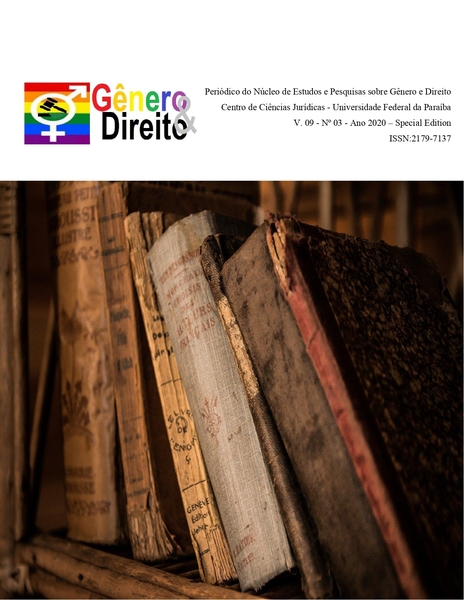CRIMINALISTIC FEATURES AND EXEMPLARY PARAMETERS OF DEFENSE SPEECH
Palavras-chave:
defense speeches, criminalism, crime, judge, prosecutor, lawyer, law, defense mechanism, court, proceedings, defendant, case lawResumo
Criminalistic features and exemplary parameters of defense speech are investigated in the article.
In this research, in addition to large-scale scientific research in modern times it also speaks of the criminalization aspects of defense activities in parallel with the criminal-procedural aspects of defense activity which has been highlighted in separate scientific articles, as well as strategy, tactics and methodology of defense activity are explained and the various classifications (for example, colligation, coalition, group defense, etc.) of defense activity in the context of criminalistics situology (analysis of separate investigative conditions) are dealt on.We think it is expedient to provide as much information as possible in the context of this article.The works of prominent scholars who have studied the court of speech culture of different countries have been studied within the scope of this research.It is advisable to apply the experience of foreign countries to systematize issues related to tactics of defense speeches, and to create exemplary models. Among the countries that have developed the highest level of court culture, the United States should first of all be mentioned. The contemporary US legal system has genesis of the Anglo-Saxon law system, the role of the case law in court cases, the existence of an institution of judges, and other conditions contributed to the fact that judicial trials in this country's judiciary and particularly criminal prosecution have become an extremely important issue.During the speech defense mechanisms are the methods of behavior that the judge finds by following the behavior of the prisoner before him. Certain definitions have been created after such defense mechanisms have been investigated. Examples of the use of these mechanisms are based on information obtained from those individuals. Individual uses a variety of defense mechanisms, mainly one or two defense mechanisms. The most common types of them are investigated in the article.Since the defense mechanisms are habit-forming, it's not easy to get new forms of behavior. For this reason, many individuals need high-level support to build more effective behaviors. At this stage, it is useful to use the science-behavioral techniques. The usefulness of these methods can enhance the sense of success of the accused, and such issues are reflected in the article.
Downloads
Referências
1. Criminalistics. Textbook / scientific editor. F. Javadov. Baku: Law, 2010, 752 p.
2. Criminalistic methodology / scientific editor. F. Javadov. Baku: Law, 484 p.
3. Movsumov J.H. Soviet criminal process. Textbook. Baku: Maarif, 1989, 312 p.
Foreign Literature
a) In Russian:
4. Baev M.O. Tactics of professional defense against charges in the criminal process of Russia. Ph.D Sciences, Voronezh, 1998, 194 c.
5. Bochkareva E.V. Tactics of professional protection against charges of committing crimes against property at the stage of preliminary investigation. Ph.D Surgut, 2003, 218 c.
6. Zorin R.G. Criminalistic and criminal procedural aspects of countering the defense of charges in criminal proceedings // Scientific works of RAYUN, 2008, No. 8, p. 570-572.
7. Konin V.V. Tactics of professional protection of the defendant in the court of first instance. Ph.D Kaliningrad, 2003, 195 c.
8. Criminalistic / D. Suleymanova. Baku: Ishig, 2000, 680 p.
b) In English
9. Bassam Tibi. Political Islam, World Politics and Europe. Routledge. 2008 p. 33
10. Friedman, Lawrence M. American Law in the Twentieth Century, 2002, Los Angeles Univ press. p.120
11. Hall, Kermit L. The Magic Mirror: Law in American History. New York, 1989, p.189
12. Hall, Kermit L. et al. American Legal History: Cases and Materials, Manhattan, 2010; p.752
13. Horvitz, Morton J. The transformation of American law: 1780 - 1860, 1977, New York, p. 385
14. Horvitz, Morton J. The transformation of American law, 1870-1960: the crisis of legal ortho-doxy, Michigan Univ. 1994, 300 pp.
15. Howe, Mark de Wolfe, ed. Readings in American Legal History, New York, 2001, Law So-ciety p. 540
Johnson Herbert. American legal and constitutional history: cases and materials. New York, 2001, 733 pp.
17. Jonathan Brown, Hadith: Muhammad's Legacy in the Medieval and Modern World, One-world Publications, 2009. ISBN 978-1851686636, Chapter 2
18. Joseph Lowry. In The Cambridge Companion to Muhammad (Editor: Jonathan E. Brockopp), Cambridge University Press, 2010. ISBN 978-0521713726, pp. 92-94
19. Wael B. Hallaq. Was al-Shafii the Master of Architecture of Islamic Jurisprudence? // Interna-tional Journal of Middle East Studies, 1993. Vol. 25, No. 4, pp. 587-605;
c) In Arabic
20. Seyyed Mohammed Jabr المؤمنون - الآية الله الرحمن الرحيم الكتاب المؤمنون - الآية الآية المؤمنون - الآية الله الرحمن الرحيم الكتاب المؤمنون - الآية الله الرحمن الرحيم الكتاب المقدس California Univer. 1990. 627 p.
21. Fuad Mohammed Abd al-kebisi. اجارة الاعيان في الشريعة و القانون. Michigan Univer. America. 2000, 413 p.
22. Samir Aliya. المدخل لدراسة القانون والشريعة: نظرية القاعدة القانونية والقاعدة الشرعية: دراسة مقارن. Michigan Univer. America. 2009. 183 p.
d) In Turkish
23. Friedrich Arntzen, Psychologie der Zeugenaussage 4. Auflage; Expression
24. Psychology Credibility Criteria, İstanbul, 2001 4. Issue c. 123
Internet sources:
25. http://az.trend.az/news/society/2286658.html
26. http://bizimyol.info/news/25437.html
27. http://www.etika.az/?page_id=37
28. Sudebnaja-rhetoric.
29. books.house> sudebnaya-etika / theme ... sudebnoy.html.
30. bib.social> ... methodology-sudebnoy-expertise.
31. libma.ru> uchebniki / osnovy_sudebnogo_krasnorechija.

